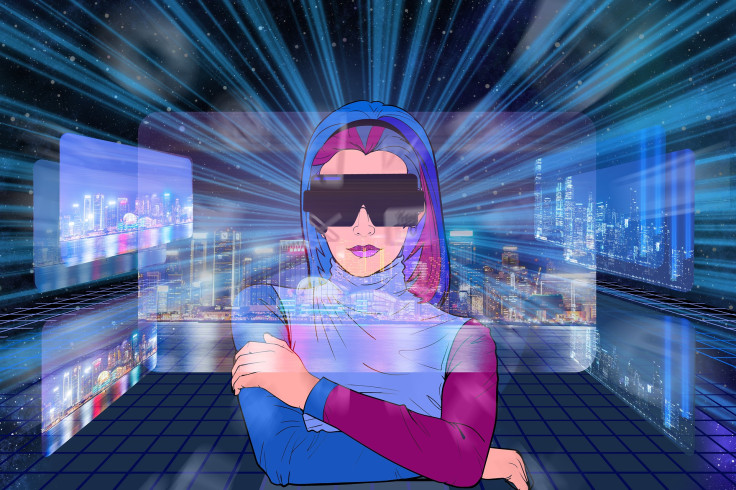New Report Shines Spotlight On Gen Z's Love For Virtual Worlds
Young audiences can't get enough of virtual worlds as they transition from social networks to social video games and the metaverse. The insight came from a new report by Everyrealm, an a16z-backed immersive media company exploring the impact of new media.
Everyrealm's "Immersive Media Market Report" may surprise those who believed social media's stranglehold on the attention of Gen Z'ers was permanent. Among the many fascinating stats revealed in the report was that young audiences spend five times as much time in social video games as on social networks like Instagram. Evidently, the prospect of gaming and chatting is more attractive than scrolling, liking and commenting.
An Irresistible Diversity of Experience
Immersive media — defined as interactive, social video-game-type content delivered via virtual worlds — has generated huge attention since Facebook rebranded to Meta in late 2021. Platforms like Roblox, Fortnite, Minecraft, Lego Worlds and Meta's Horizon Worlds enable players to explore rich digital environments, interacting with others via avatars whose appearance can be personalized. In many cases, players can even design their own physical terrain using 3D creation tools — terrain that can then be traversed by other gamers.
The report concluded that the diversity of experiences offered by social video games and virtual worlds outstrips those supplied by traditional forms of media, satisfying users' needs for social connection and entertainment while allowing them to exercise their creativity through customization. Twenty-six percent of those surveyed said video gaming was their favorite form of entertainment, with only 10% choosing social media or TV and movies.
Incredibly, almost 90% of Gen Alpha and Gen Z described themselves as gamers or game enthusiasts, with the latter cohort spending nearly twice as much time with friends in virtual worlds than in real life. While that statistic might trouble some parents, more than half of the respondents revealed they were able to express themselves more easily in virtual worlds. Moreover, half of this younger demographic regularly spends money on games and in-game items, amounting to over $60 billion per year.
Little wonder, the metaverse was described as an "$800 billion market opportunity" by Bloomberg's senior industry analysts. McKinsey was even more optimistic, suggesting that virtual worlds could generate up to $5 trillion in value by 2030.
According to Everyrealm's CEO Janine Yorio, "companies need to prepare for the rise of immersive media if they want to find younger audiences." She added that businesses and marketers must adapt to this "new reality if they want to remain relevant and capture the attention of the next generation of consumers."
Based on the aforementioned findings, it's tough to disagree with Yorio's assessment. Immersive media has gathered tremendous momentum in recent years, chipping away at the hegemony of 2D social media platforms and in some cases forcing the latter to adopt new models.
A Watershed Moment for Virtual Worlds
This year, Apple will release its first VR/AR mixed reality headset, ushering in a new era of sophisticated wearable technology designed for use in virtual worlds.
Although the virtual gaming landscape is already somewhat crowded, Apple's release will be a watershed moment. In many ways, we can trace the current music streaming model back to the release of the company's maiden iPod in 2001, a device that let users carry thousands of songs around in their pockets. Undoubtedly, Apple's headset will compel many consumers, including Gen X'ers and Millennials, to investigate virtual worlds for the very first time.
Mainstream media has picked up on the virtual world craze. Just this week, The New York Times described the metaverse as "a new frontier for real estate builders and investors," noting that the virtual real estate market is set to grow by $5.37 billion by 2026. Last month, a BBC News article asked if the pandemic had accelerated our transition toward a future in which the bricks-and-mortar workplace could be replaced by a VR alternative.
It seems we have reached a stage where virtual worlds are being advanced as an option for both work and play, a paradoxical means of paying the bills and escaping from the reality of paying the bills. Yes, work and leisure can actually coalesce: Many virtual platforms have serious earning potential, with players able to rent or sell NFTs for profit, organize and host ticketed events and generate income from completing quests or winning tournaments. As noted in the Everyrealm report, the virtual goods market was worth almost $61 billion in 2021 — and as new platforms and users come online, that number will surely grow.
Everyrealm knows a thing or two about the potential of virtual worlds. The business, formerly known as Republic Realm, develops and invests in metaverse and social video-gaming firms including The Sandbox and Decentraland. It raised $60 million in a Series A funding round led by serial tech investor Andreessen Horowitz last year.
If the shifting of technology's tectonic plates indicates one thing, it is that immersive media will play a dominant role in life as we know from here on out — not just for Generation Z but humankind as a whole. You would be well advised to prepare accordingly.
(Bridgit Murphy is a blockchain technology engineer specializing in integrated online services, smart contracts, fork development and quality assurance.)

© Copyright IBTimes 2024. All rights reserved.




















